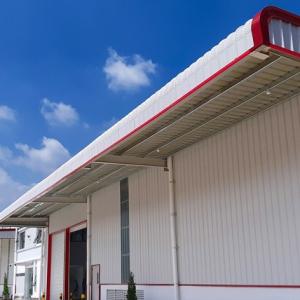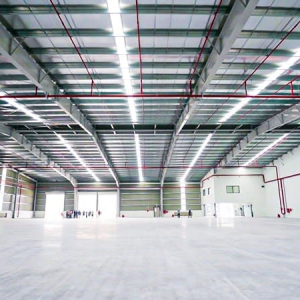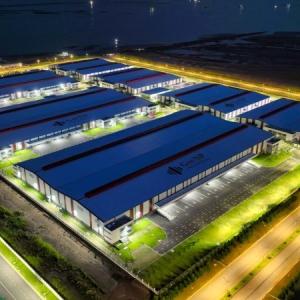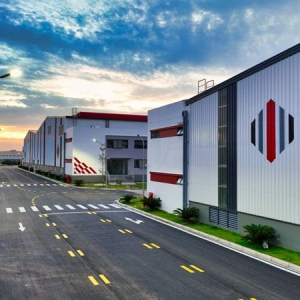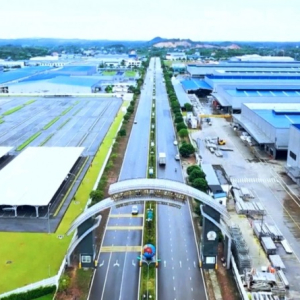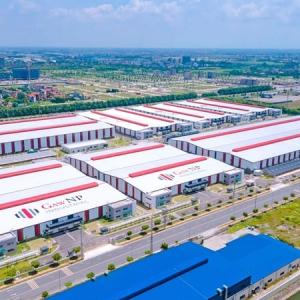Vietnam still a darling for FDI despite global headwinds: HSBC
August 28, 2024 07:59 AM
Vietnam, whose solid fundamentals have attracted an influx of foreign companies, remains compelling to foreign direct investment (FDI) despite intensified global competition, according to HSBC.
Vietnam, whose solid fundamentals have attracted an influx of foreign companies, remains compelling to foreign direct investment (FDI) despite intensified global competition, according to HSBC.
As the global investment landscape shifts amid developments such as the implementation of the Global Minimum Tax, there are questions as to whether Vietnam can sustain the momentum of robust investment flows it has enjoyed since its accession to the World Trade Organization (WTO) in 2007.

Chart by The Investor/ Quang Minh
In the past 20 years, Vietnam has grown to become a major manufacturing base that is tightly integrated with the global supply chain. Exports have grown more than 13% annually on average since 2007, dominated by foreign-invested enterprises.
Traditionally, FDI inflows have been led by South Korea, most notably by Samsung. Since Samsung’s establishment of its first phone factory in the northern province of Bac Ninh in 2008, more than half its global smartphone production is now manufactured in Vietnam, with a cumulative investment exceeding $20 billion.
The efforts of these “early movers” have encouraged other tech giants to invest in Vietnam’s manufacturing capabilities. Since 2023, leading Chinese manufacturing firms have ramped up their investments in Vietnam, with almost 20% of newly registered FDI being sourced from mainland China.

South Korea has been a leading FDI provider, but China is catching up.
The surge in multinational corporations’ (MNC) interests in Vietnam stems from a variety of factors, including competitive costs and FDI-friendly policies. Comparing labor costs across Asia, manufacturing wages in Vietnam are lower than that in mainland China and other peers. This is despite the population’s solid general education, suggested by Vietnam’s high PISA scores that measure the performance of 15-year-olds.

Manufacturing wages in Vietnam is less than half of that in mainland China
Other costs, such as of the energy needed to operate factories, are also competitive in Vietnam. When comparing electricity prices for businesses, Vietnam ranked second-lowest among its peers, though recent changes making electricity price adjustments more frequent may impact the current dynamics. Meanwhile, diesel, which is widely used in industrial sectors, reflects a similar competitive edge in terms of prices.

Electricity and diesel prices in ASEAN countries.
In addition, Vietnam has made significant progress in setting up various economic agreements with major trading partners, such as the EU-Vietnam FTA (EUVFTA) and the Comprehensive and Progressive Agreement for Trans-Pacific Partnership (CPTPP). In turn, these developments have facilitated and enabled foreign investment, with Vietnam seen as increasingly open to FDI, per the OECD.

FDI regulatory restrictiveness index.
Part of the favorable investment environment can be explained by proactive support from the government via the tax system. Vietnam has a competitive position relative to its peers with a 20% statutory corporate income tax rate. Some firms have been able to use lengthy tax breaks and holidays to reduce the effective rate further.

Statutory corporate income tax rate.
So far, these pull factors have been important in attracting investment and integrating Vietnam with the global value chain (GVC). In fact, Vietnam’s GVC participation rate has sharply risen over the years, now comparable to that of Singapore.
That said, the rise in participation has been captured primarily through greater backward GVC participation. Vietnam is now positioned as a hub for importing complex intermediate inputs for final assembly, corroborated by a low localization rate in the electronics industry.
HSBC researchers reckon that if the country is to sustain robust investment inflows, it will be critical for Vietnam to climb up the manufacturing value chain and raise the domestic value-added content in these goods. Compared with the sharp rise in consumer electronics exports, Vietnam’s share of global integrated circuit (IC) exports has grown at a slower pace.
In the first seven months of this year, manufacturing FDI shows no signs of slowing. Newly registered manufacturing FDI has grown 36% year-on-year, already exceeding some preceding years year-to-date.

Manufacturing FDI has exceeded full levels during 2020-2022.
The northern province of Bac Ninh, a major electronics hub, drew more than 30% of total registered capital in June and July. This was led by Amkor, which boosted its semiconductor project investment in the province by an additional $1.07 billion.
Assessing Vietnam’s FDI outlook for 2024, the Ministry of Planning and Investment said that the FDI picture will remain bright this year, driven by the country’s increasing role in MNCs’ diversification strategies; an ongoing economic recovery; and stable macroeconomic fundamentals.
Both foreign institutions and the ministry are fairly optimistic about FDI expectations in the second half of this year, said Deputy Minister of Planning and Investment Tran Quoc Phuong last month. He predicted registered inbound FDI to reach $39-40 billion this year, equivalent to or higher than in 2023.
Although workers are equipped with a solid educational foundation, the current lack of skilled technical workers has led to challenges in developing semiconductor manufacturing capabilities, say HSBC researchers. This has prompted the government to work towards expanding its semiconductor workforce in the coming years.
The lack of specialized workers is also weighing on other sectors, such as maritime transport and logistics. Beyond expanding and improving vocational education on a national level, more initiatives to help promote foreign companies’ engagement with the domestic economy could help broaden out the benefits of increasingly complex FDI inflows.
For example, U.S.-based chip firm Synopsys recently signed an agreement to work with students and lecturers of Vietnam National University – Ho Chi Minh City on semiconductor design, training, and research.
Encouragingly, signs have emerged of more complex manufacturing knowledge and processes entering Vietnam. In 2022, Samsung established an R&D center in Hanoi to further develop manufacturing capabilities while commencing production of certain semiconductor components. Meanwhile, Apple has raised its stakes in Vietnam, allocating product development resources for the iPad.
The researchers point out that factors beyond tax considerations, such as the quality of infrastructure, will also need to be proactively addressed as the Global Minimum Tax is implemented across jurisdictions. Measures such as further leveraging digitalization to streamline trade processes, securing reliable and green energy, and facilitating goods transport through better infrastructure are likely to impact MNCs’ investment decisions in the coming years.
Source: theinvestor.vn
Warehouse for lease in Vietnam | Warehouse for rent in Vietnam | Factory for lease in Vietnam | Factory for rent in Vietnam
